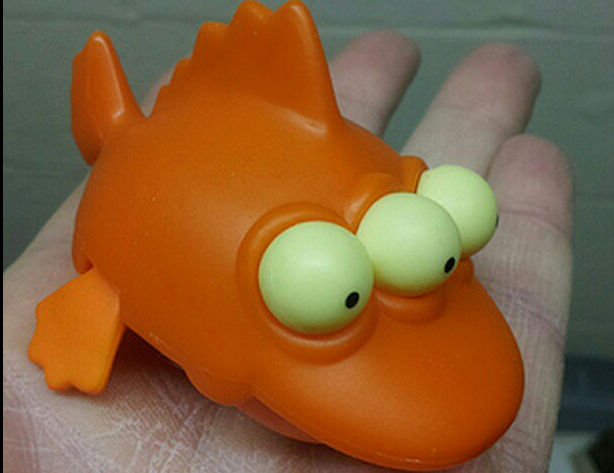Canada is up there on environmental awareness and monitoring contaminants in seafood. It was one of the first countries in the world to talk about the dangers of mercury from industry in fish, and now concerned citizens are comparing scary data on fish and seafood products from Japan after its 2011 nuclear meltdown.
Are you eating radioactive caesium? Read on for the list of what to avoid.
According to this source you should avoid eating the following products that come from the western Pacific Ocean. It’s a good reason for shark fin soup eaters (shark fin soup can give you brain damage) to stop the cruel practice, with tuna seaweed and carp on the list as well.
Cesium was found in these groups:
• 73 per cent of mackerel tested
• 91 per cent of the halibut
• 92 per cent of the sardines
• 93 per cent of the tuna and eel
• 94 per cent of the cod and anchovies
• 100 per cent of the carp, seaweed, shark and monkfish
The problem with fish and seafood products is that it’s very hard to trace the source of the products you buy in a regular supermarket or outdoor shuk. If you live in the Middle East you can opt to buy locally caught produce (but be mindful of local mercury reports and what’s in the fish from pollutants at sea), buy farmed fish from land-based pools, or buy from sustainably harvested sources that might be flown in from countries in safe zones.
According to the report on Reader Supported News, some of the fish and products mentioned above were caught hundreds of miles from the Japanese coast. When the reactor blew it emitted an estimated 10 to 100 times more radiation to the sea than the Chernobyl reactor explosion, according to sources in the report.
Japan meanwhile is the only country really monitoring what’s in its fish and seafood products.
According to the story the Canadian Food Inspection Agency, which monitors food safety, says it is aware of the numbers but says the amounts of cesium detected are small. They have stopped testing the products coming to Canada from Japan.
“Approximately 60 per cent of fish have shown to have detectable levels of radionuclides,” it said in an emailed statement. “The majority of exported fish to Canada are caught much farther from the coast of Japan, and the Japanese testing has shown that these fish have not been contaminated with high levels of radionuclides.”
Japanese data on the other hand, shows something else: “In November, 18 per cent of cod exceeded a new radiation ceiling for food to be implemented in Japan in April – along with 21 per cent of eel, 22 per cent of sole and 33 per cent of seaweed.
“Overall, one in five of the 1,100 catches tested in November exceeded the new ceiling of 100 becquerels per kilogram. (Canada’s ceiling for radiation in food is much higher: 1,000 becquerels per kilogram.)”
“It’s completely untrue to say this level of radiation is safe or harmless,” said Gordon Edwards, president of the Canadian Coalition for Nuclear Responsibility.
Dangers of exposure to radioactive materials has led one Canadian Dr. Dale Dewar to check and limit what her grandkids are eating when they come to visit her. “We suspect we’re going to see more cancers, decreased fetal viability, decreased fertility, increased metabolic defects – and we expect them to be generational,” she said.
If you want to know what’s okay to eat, Tafline has put together a list on sustainable fish and seafood options from the Monteray Bay a while back, but we suppose that sardines from the Pacific will now be taken off the list.
Moderation is probably a safe bet if you don’t know what you are eating when it comes to fish and seafood. Pregnant and nursing women, and small children should limit their intake of most kinds of fatty fish at all times due to exposure to mercury and fat soluble pollutants. Now add fish and seafood with cesium to the list.
For the eco curious and health conscious Wikipedia has an extensive entry on this issue here.
Coal power plants are one of the reasons why there is so much mercury in seafood. Time to start aquaponics farming I guess. And getting more solar power to the grid.
We dream.
Read the whole story on Reader Supported News
Image via Dan Century


At this point, with cesium being the harmful long-life isotope released in the most quantity by Fukushima, as individuals we need to protect ourselves and our families.
We found a natural pectin-based product developed by the EU for mainly residents of neighboring countries that received fallout.
Vitapect is proven to remove 63% of cesium in independent studies.
Are these not the same numbers that were supplied back in October by Global Research!
Fukushima: The Ticking Nuclear Bomb. Over 800 Tons of Radioactive Material …
Global Research, October 31, 2013
On a test made on 15 dead tuna, all 15 were found to be contaminated with radiation. Of the fish being sold to Canada, in 2012, the Vancouver Sun recorded the number of specimens testing positive for Cesium-137, namely: 100 per cent of monkfish, carp, seaweed and shark; 94% of cod and anchovies; 93% of tuna and eels; 92% of sardines; 91% of halibut; 73% of mackerel.
They could be. Ask the authors of the original article that we cite.